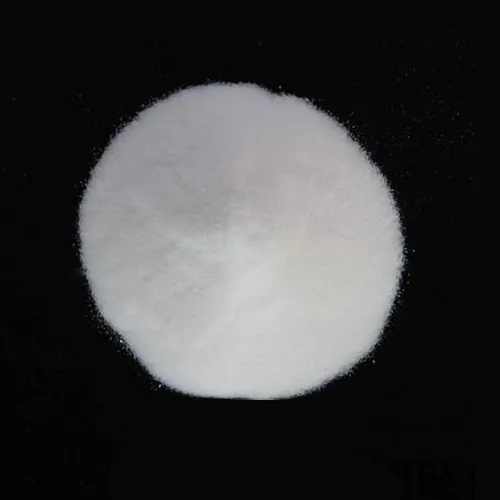Основные химические свойства и измерение
Фосфор (атомный номер 15) - многовалентный неметаллический элемент, встречающийся преимущественно в минералах апатита. Напротив, фосфат относится конкретно к ортофосфатному иону PO43−, где один атом фосфора тетраэдрически связан с четырьмя атомами кислорода. Это структурное различие приводит к существенно отличающемуся химическому поведению.:
| Составной Тип | Химическая структура | Основные области Применения |
|---|---|---|
| Ортофосфаты | Дискретный ПО43− единицы измерения | Удобрения, пищевые добавки |
| Полифосфаты | Цепочки ПО4 тетраэдры | Средства для очистки воды, моющие средства. |
| Метафосфаты | ПО с кольцевой структурой4 единицы измерения | Ингибиторы коррозии |
Примечание по измерению: Точность анализа требует четкого указания единицы измерения. Концентрации фосфора следует указывать в мг / л−1 или ммоль / л−1, в то время как для измерения содержания фосфата требуется mg PO43− L−1 или ммоль / Л ПО43− L−1. Конверсия: 1 мг / л−1 ≈ 3,07 мг ПО43− L−1Пренебрежение этим различием приводит к аналитическим ошибкам , превышающим 200%[3].
Видообразование в водной среде значительно зависит от pH. В диапазоне pH 5-9 доминирующими видами являются H2ПО4− и HPO42−. При рН 7,2 молярное отношение H2ПО4−: HPO42− ≈ 1:1,6, что дает среднюю валентность 1,62 мэкв/ммоль.−1[3].
Эффективность сельского хозяйства и рациональное использование окружающей среды
Обычные фосфорсодержащие удобрения демонстрируют эффективность использования фосфора (PUE) ниже 20% из-за иммобилизации путем осаждения катионами (Fe3+, Эл3+, Калифорния2+) или адсорбция в почве[9]Эта неэффективность создает как экономические, так и экологические проблемы:
Передовые системы доставки
- Составы с полимерным покрытием: Технология RhizoSorb® демонстрирует на 50% более высокий PUE по сравнению с обычными удобрениями при снижении расхода фосфора на 78%.[2].
- Микробиологическая Солюбилизация: Бацилла, Псевдомонада, и Пенициллин виды увеличивают доступность фосфора на 30-50% в почвах с низким содержанием P за счет выделения органических кислот[9].
- Точное Нанесение: Внесение фосфора с переменной нормой на основе анализа почвы сокращает избыточное внесение и сток на 30-50%.
Смягчение последствий для окружающей среды
Когда концентрация фосфатов превышает 0,03 мг / л в пресноводных экосистемах, риск эвтрофикации существенно возрастает. На долю сельскохозяйственных стоков приходится примерно 50% фосфора, поступающего в поверхностные воды.[2]Новейшие адсорбенты показывают многообещающие результаты:
| Адсорбирующий материал | Вместимость | Эффективность регенерации |
|---|---|---|
| Ce0.8Zr0.2O2 наночастицы | 112 мг ПО43− g−1 | N/A |
| Бинарный оксид Fe-Cu | 35 мг ПО43− g−1 | >95% с 0,1 М NaOH |
Последствия для здоровья и биологическая регуляция
В биологических системах фосфор существует почти исключительно в виде фосфат-ионов. Организм человека поддерживает уровень фосфата в сыворотке крови в пределах 0,8-1,5 ммоль/ л43− L−1 (2,5-4,5 мг/дЛ) за счет регуляции функции почек[1]Сбои в работе имеют серьезные последствия:
| Источник фосфата | Скорость Поглощения | Клиническое значение |
|---|---|---|
| Неорганические добавки | 90-100% | Основная проблема в обработанных пищевых продуктах |
| Фосфаты животного происхождения | 40-60% | Требуется мониторинг почечной диеты |
| Фосфаты растительного происхождения | 20-40% | Сниженная биодоступность из-за фитатов |
Для пациентов с почечной недостаточностью критически важно поддерживать уровень фосфата в сыворотке крови ниже 1,8 ммоль /л (5,5 мг / дл). Гиперфосфатемия (> 2,0 ммоль / л) увеличивает риск сердечно-сосудистой смертности на 30-40% у пациентов, находящихся на диализе, вследствие кальцификации сосудов[1,4].
Примечание о токсичности: Элементарный белый фосфор проявляет острую токсичность (LD50 ≈ 3 мг кг−1), хотя воздействие окружающей среды в первую очередь связано с фосфатными формами.
Промышленные процессы и рекуперация ресурсов
Фосфатная порода (Ca5(ПО4)3F) при обработке серной кислотой получается фосфорная кислота (H3ПО4), основного сырья для производства сельскохозяйственных фосфатов. Новые технологии рекуперации ресурсов решают проблемы отходов.:
Круговые потоки ресурсов
Запатентованный процесс Jinzhengda преобразует отходы фосфогипса в кальциево-магниевые удобрения с полифосфорной кислотой, что позволяет снизить энергопотребление на 30% по сравнению с традиционным производством.[5,8]. Это решает двойную проблему накопления отходов (в Китае накоплено более 300 миллионов тонн) и высокоэффективного производства удобрений.
Управление сточными водами
Глобальные предельные значения выбросов приближаются к отметке ≤ 0,1 мг на литр−1. Calcium-rich attapulgite achieves <0.01 mg P L−1 после 1-часового контакта[2].
Технические соображения и передовой опыт
В системах управления фосфатами необходимо обратить внимание на несколько технических ошибок:
- Погрешности измерения: Путает TDP (Общий растворенный фосфор) с TDP-PO4 приводит к недопроектированию систем дозирования химических веществ.
- Зависимость от рН: Использование mEq L−1 без коррекции рН получается неправильная стехиометрия для расчетов осадков.
- Неправильное Толкование ярлыка: “Бесфосфатные” продукты все еще могут содержать фосфорорганические соединения, способствующие балансу массы фосфора.
- Связующие Вещества: Полимерные фосфатсвязывающие средства, не содержащие алюминия, демонстрируют улучшенную комплаентность пациентов при лечении гиперфосфатемии.[7].
Ссылки и технические источники
1. Здоровье Heho: контроль содержания фосфора в почках пациентов (2018)
2. Сельскохозяйственные культуры: технологии повышения эффективности фосфорных удобрений (2025)
3. ЭВДик: Система классификации фосфорных кислот
4. Juduo Health: методы контроля фосфора при диализе (2019)
5. Sohu: Патент на утилизацию фосфорных хвостов Jinzhengda (2024)
6. Сомнительный орех: Химия степени окисления фосфора
7. ClinicalTrials.gov: Исследование по ограничению добавок фосфора (2015)
8. Руководство по промышленной переработке фосфатов
9. Курс MCPCourse: Механизмы мобилизации фосфатов микробами (2021)
10. Juduo Health: классификация фосфора в диализной диете (2020)

